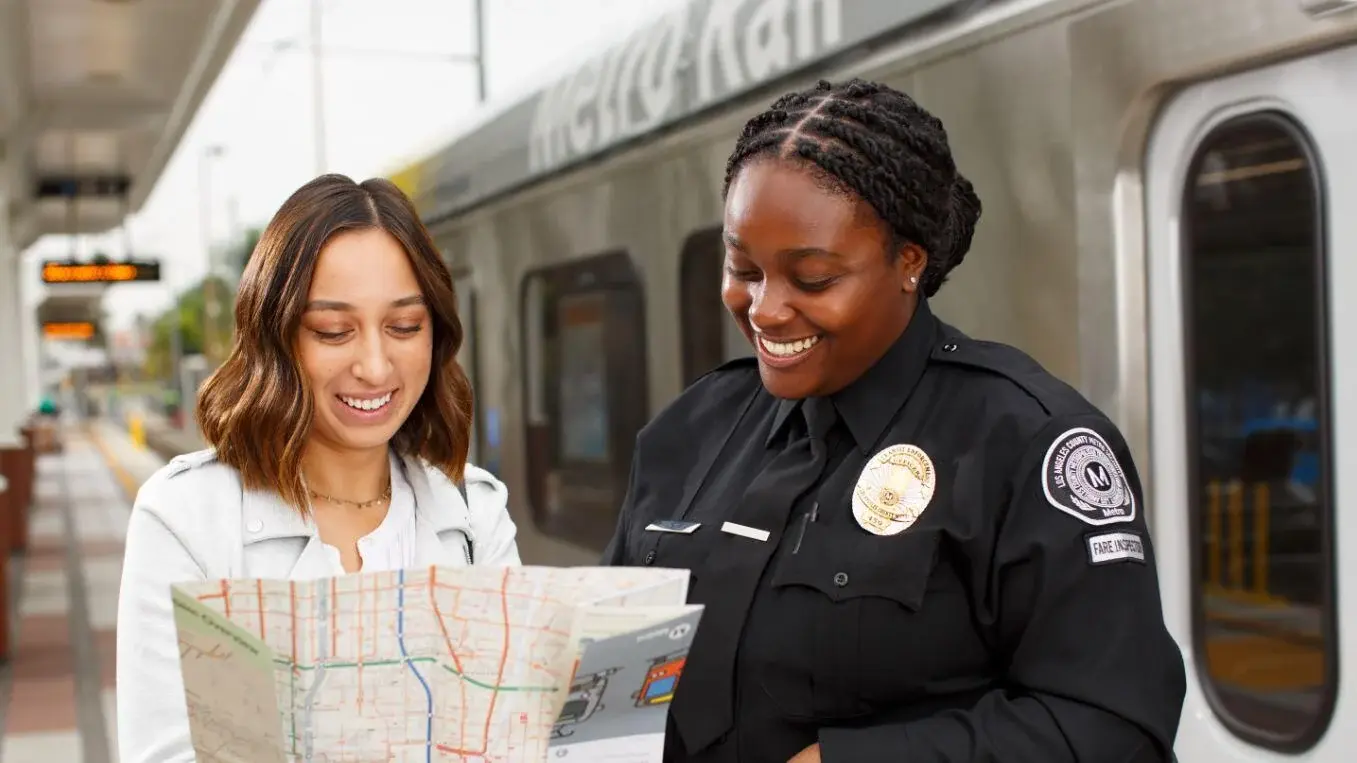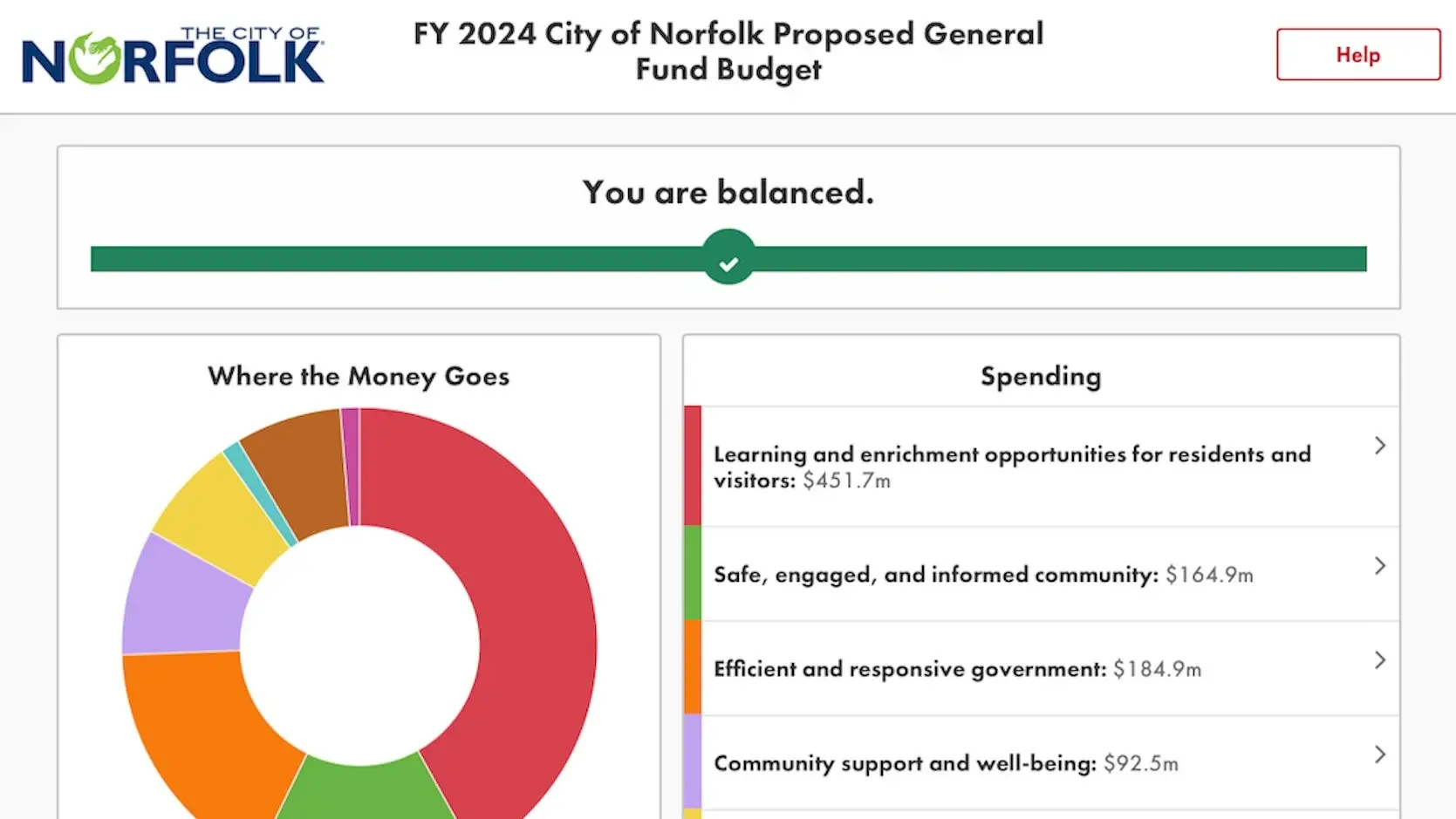Riders Use Online Simulation Tool to Shape LA Metro Budget
By Polco on September 29, 2023

In an $8.7 billion budget challenge, most residents opted to increase bus service, mental health services, and Metro transit security.
Glance around the Los Angeles County Metropolitan Transportation Authority (Metro), and you may see posters with a QR code linking to an online budget simulation. Clicking on the link puts riders in a theoretical “driver’s seat” of revenue and spending for the $8.7 billion budget, which in FY2023 funded the transit of an estimated 240 million riders by bus and rail.
The activity is an example of 21st-century budget engagement – a more equitable, digital alternative to 1 minute at the mic during a public meeting, or not engaging stakeholders at all.
Metro’s interactive budget simulation, called My Metro Budget, gives riders the option to select their priorities for one of the nation’s largest transit systems. The challenge? Balancing the budget, which they can then submit to Metro’s decision-makers.
In addition to generating feedback, the simulation educates participants on the difficult spending trade-offs for LA County’s transit needs, including safety & security, cleanliness, and frequency of rides. The input then helps Metro staff and leadership build the fiscal 2024 and future budgets.
Here’s how it works, in three steps:
- First, under the spending section, users answer three trade-off questions about Bus, Rail and MicroTransit Service.
- Second, for the remainder of the Spending section, users can adjust the subcategories by using the + and - buttons.
- Third, for the Revenue section, users can answer a single trade-off question about advertising.
Participants who complete and submit their budgets can leave comments and be entered to win a 30-Day Pass TAP card.

The "Why"
This kind of interactive budgeting exercise gives riders a sense of the difficult decisions in public budgeting. For example, increase the frequency of buses to 30 minutes from 40 or 60? Then expect to add $77 million in spending. Agree to more advertising along your route? You’ll get an increase in revenue of $5 million. More broadly, Metro budget simulation participants must consider whether they should reduce one service to pay for another.
The feedback from these trade-off questions helps the system’s leaders make decisions on priorities. It also aims to provide easy-to-digest information on Metro’s annual budget. For example, Metro leadership frequently hears that it should reallocate highway funding to operations, but it is required by voter-approved mandate to spend a certain amount of funding on highways. Simulation participants learn about this and other locked spending categories the agency can’t change.
The simulation is also helping Metro determine if the increased budget in those areas last year resulted in the system feeling safer and cleaner. “It’s an issue with the societal crises of mental health, drug addiction, and homelessness spilling onto our transit system,” said Oren Ben-Joseph, Director of Budget for Metro’s Office of Management and Budget. “We are using the My Metro Budget results to help track Metro’s progress on addressing these crises.”
History
“Over the past seven years, the Metro Board of Directors and management wanted to prioritize budget outreach because they felt the public didn’t have a clear enough understanding of where Metro gets its money and how it spends it,” Ben-Joseph said. Metro previously gathered feedback through surveys, but the information was overly focused on customer experience and operations rather than budget priorities. It also lacked an educational component. “We felt it was very important to also focus on the educational aspect and not just put out another survey,” Ben-Joseph said.
In the summer of 2022, Metro started working with Balancing Act from Polco, a provider of simulation-based public engagement software, to create an online budget simulation tool.
The ability to customize the simulation was a plus, Ben-Joseph said. Internally, the team condensed detailed revenue and spending data from Metro’s budget book into easily digestible information for the simulation. “A lot of things that would just normally fall into operations we split out because we knew they were top concerns, like cleanliness and safety on the system,” Ben-Joseph said.

Getting the Word Out
In addition to placing posters with a QR code around transit stations, Metro attracted participants through its 200k-person email list, social media posts, and printed cards handed out to riders. Each marketing channel corresponded to a version of the simulation, which showed how many people were reached through each channel – data that will help determine the focus for the next simulation.
The team also found ways to get feedback from non-English speakers by offering the simulation in seven additional languages. “When we noticed it only had four responses in Spanish, we made a Spanish version,” Ben-Joseph said. “We also targeted ads towards Spanish speakers, and we were able to bump that up to over 100 responses in Spanish.”
Hear Every Voice
To ensure it received equitable engagement for the budget simulation, Metro weighted data to match LA County demographics. By analyzing the geographic data, the team advertised on Facebook in equity-focused communities (EFCs) with low responses. Advertising was targeted by zip codes to reach more diverse, lower-income populations with lower car use and higher transit ridership.
“We wanted to make sure we were capturing responses from our riders, who tend to be even more diverse than LA County as a whole, as well as in lower income brackets,” Ben-Joseph said.

The Engagement
Although the simulation remained open through the May 2023 budget decision, the finance department created an interactive dashboard for the Metro departments to analyze the qualitative and quantitative data they had received. The departments then used this data to help build their FY2024 budget. The simulation received 1,250 responses, which were then weighted to reflect the county’s demographics. It also garnered 20,000 views and 22,500 interactions, with people clicking on buttons for more information on categories and subcategories. Average time spent on site was 18 ½ minutes, “so we were very happy with that,” Ben-Joseph said.
In addition, the engagement generated over 2,200 comments, ranging from “bring back the 704” transit line, to “Any proposed fare increase must require public input. The latest proposed fare increases feel like they are modeled towards other cities with greater transit coverage such as London or Berlin.”
What's Next?
As of June 2023, the Metro Board of Directors adopted the FY24 Budget. During the months leading up to adoption, each department presented to the Board staff and committees how their budget addressed the priorities and concerns gathered from the My Metro Budget tool.
The key findings were that respondents wanted more budget for bus and rail service, homeless/mental health services, Metro transit security, and increased cleanliness.
In response, Metro’s FY24 Budget includes the following increases:
- Increase of $113M, 5% in Bus and Rail Service
- Increase of $10M, 66%, in Homeless Outreach & Mental Health Crisis
- Increase of $13M, 43%, in Metro Transit Security
- Increase of $24M, 13% in Cleaning
The new Fiscal Year started on July 1, 2023. View the publicly available dashboard of the My Metro Budget results or the FY24 Adopted Budget Book and Summary.
Learn more about Balancing Act from Polco's budget simulation tools by requesting a demo.
Related Articles
Popular posts
Sign-up for Updates
You May Also Like
These Related Stories

How LA Metro Impressed Residents With Its Budget Engagement Outreach

Norfolk’s Budget Engagement Increases Resident Understanding of the “Delicate Reality of Allocating Funding”

